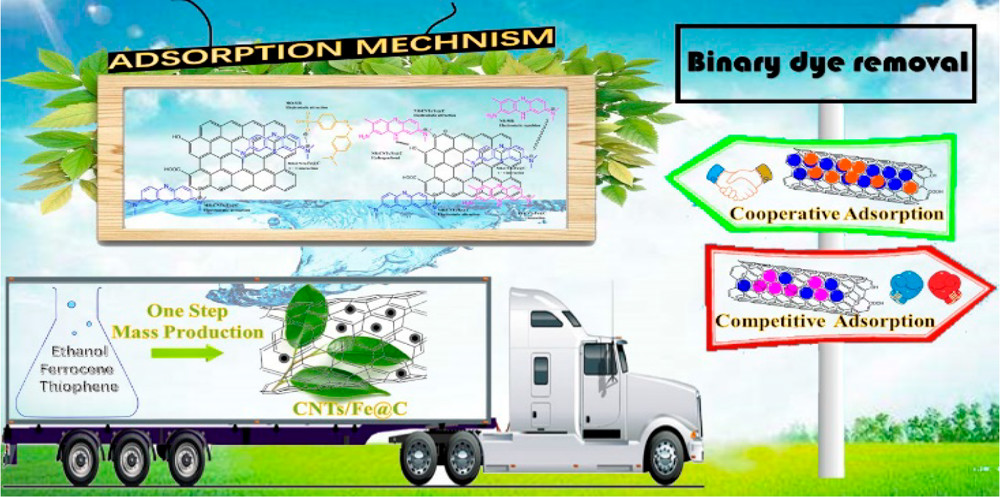ABSTRCT:Novel magnetic CNTs/Fe@C was prepared via an easy and one-pot method with a high specific surface area (186.3 m2/g) and characterized by scanning electron microscopy (SEM), X-ray diffraction (XRD), X-ray photoelectron spectroscopy (XPS), Raman spectra, etc., and it was used for dye removal. Adsorption experiments showed significant differences between single and binary dye systems. The initial adsorption capacities to methylene blue (MB), methyl orange (MO), and neutral red (NR) were 132.58, 16.53, and 98.81 mg/g, and the adsorption equilibrium time was 80, 40, and 10 min, respectively. The MB-MO dye system showed a cooperative adsorption. Its adsorption capacities increased by 30% and 35%, and equilibrium time decreased by 25% and 50%, whereas the MB-NR system presented a competitive adsorption. Its adsorption capacities decreased by 20% and 33%, and its equilibrium time was elongated 2-fold. Various isotherms and kinetic models were used to fit the data and investigate the adsorption processes as well as mechanisms. Interactions between dyes in the solution and their adsorption mechanisms onto CNTs/Fe@C were also studied through Fourier transform infrared (FT-IR), Raman spectra, and zeta potential. This study indicated that CNTs/Fe@C can be used as a promising adsorbent for large-scale applications, and cooperative and competitive adsorption in binary dye systems has an influence upon the adsorption process, which can help address dye pollution efficiently
